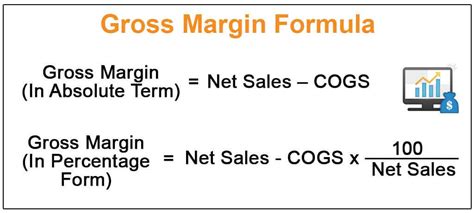How to Calculate Gross Margin: A Simple Guide for Businesses
Understanding your gross margin is crucial for the financial health of any business. It reveals how efficiently you're managing your production costs and pricing strategy. This guide will walk you through calculating gross margin and provide insights into its importance.
What is Gross Margin?
Gross margin represents the percentage of revenue left over after deducting the cost of goods sold (COGS). It's a key profitability metric that shows how much money your business makes from each dollar of sales after accounting for direct production costs. A higher gross margin generally indicates better profitability and pricing efficiency.
How to Calculate Gross Margin: The Formula
The formula for calculating gross margin is straightforward:
Gross Margin = (Revenue - Cost of Goods Sold) / Revenue * 100%
Let's break down each component:
-
Revenue: This is the total amount of money your business generated from sales during a specific period (e.g., a month, quarter, or year). This includes sales tax but excludes discounts and returns.
-
Cost of Goods Sold (COGS): This includes all direct costs associated with producing your goods or services. For a manufacturing company, this could include raw materials, direct labor, and manufacturing overhead. For a service-based business, it might include direct labor costs and materials directly used in service delivery. It does not include indirect costs like marketing, rent, or administrative expenses.
Example Calculation
Let's say a business generated $100,000 in revenue during a quarter and had a cost of goods sold of $60,000. The gross margin calculation would be:
Gross Margin = ($100,000 - $60,000) / $100,000 * 100% = 40%
This means the business has a 40% gross margin, indicating that for every dollar of revenue, 40 cents are left over after covering the direct costs of production.
Interpreting Your Gross Margin
The interpretation of your gross margin depends on your industry and business model. A higher gross margin is generally preferable, suggesting better pricing strategies and efficient cost management. However, a low gross margin isn't always a negative sign; it could indicate a competitive pricing strategy aimed at gaining market share.
Benchmarking: Compare your gross margin to industry averages to understand your performance relative to competitors. You can often find this information through industry reports and market research.
Improving Your Gross Margin
Several strategies can help improve your gross margin:
1. Increase Prices: Carefully consider raising prices if your market analysis suggests customers are willing to pay more.
2. Reduce COGS: Explore ways to lower your production costs. This could involve negotiating better deals with suppliers, improving production efficiency, or finding less expensive raw materials.
3. Improve Efficiency: Streamline your operations to reduce waste and improve productivity. This can significantly impact your COGS.
4. Product Mix Optimization: Analyze your product offerings and focus on those with higher profit margins.
Conclusion
Calculating and analyzing your gross margin is essential for understanding your business's profitability and identifying areas for improvement. By consistently monitoring and optimizing your gross margin, you can enhance your financial performance and make informed business decisions. Remember to regularly review your COGS and revenue to maintain an accurate understanding of your financial health.
